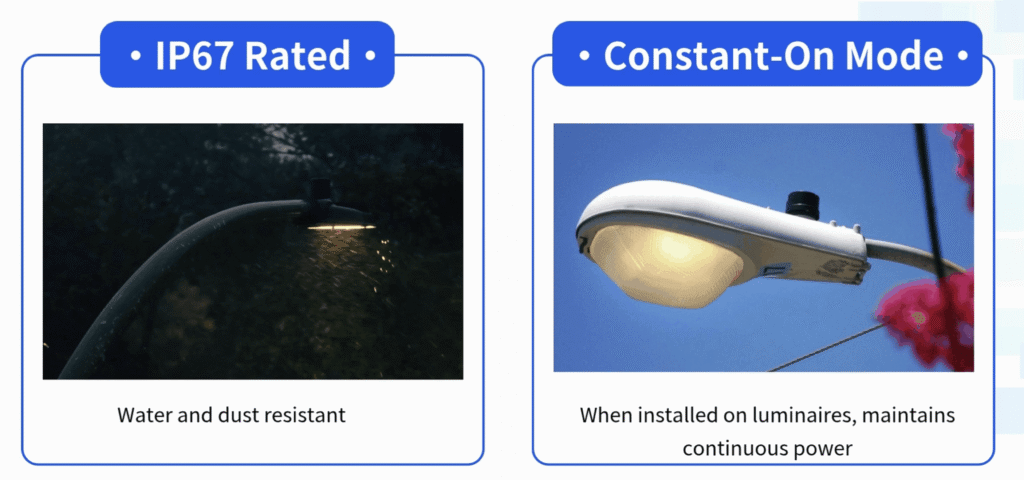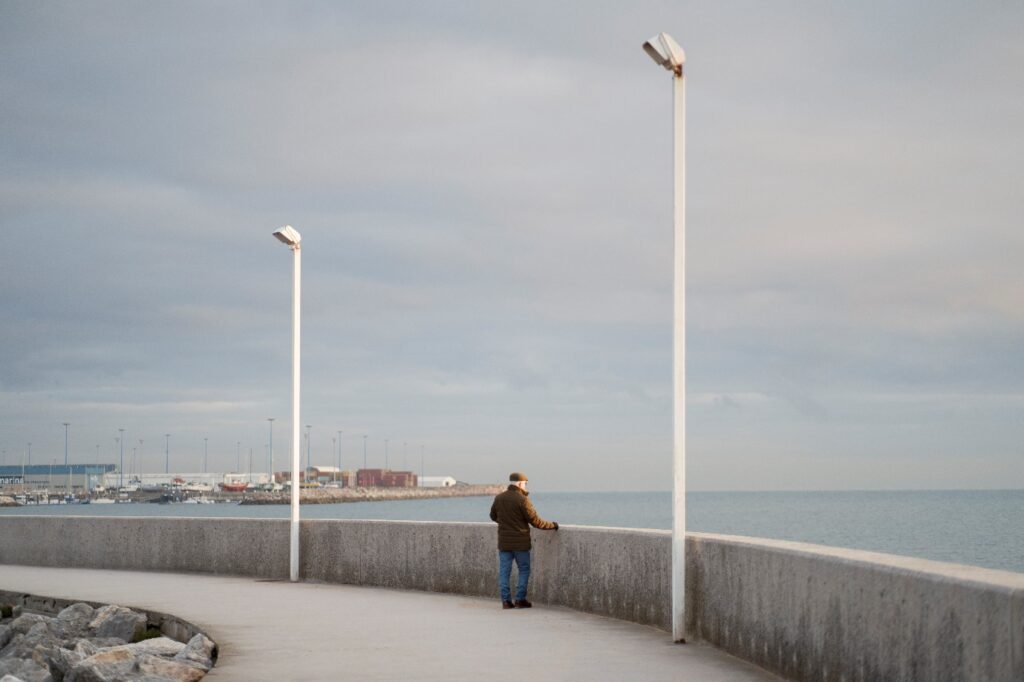In modern outdoor lighting systems, from municipal streetlights to industrial parking lot poles, small accessories often play roles far bigger than their size suggests. One such accessory is the shorting cap. At first glance, it looks like a simple plug that sits in the receptacle of a luminaire. But in practice, it can determine whether a light stays powered on or fails during commissioning or maintenance. A shorting cap is essentially a device that bypasses automated controls, such as photocells, and keeps the fixture in an “always-on” state.
Because of this direct connection, luminaires that have shorting caps will be powered at all times and this is what makes them highly useful where constant illumination is called for, or when photocells are not yet available. However, it is important to understand that shorting caps do not have light-sensing functionality and therefore cannot reduce energy consumption by turning lights off during the day.
Key Features of Shorting Caps
Why do engineers keep shorting caps in their toolkits? The answer lies in their reliability and standardization.
- Durability in Harsh Conditions
Whether exposed to blowing sand or snow, the cap still resumes its function, high-quality shorting caps are IP67-rated, meaning that they are dust-tight and resist immersion in water for short periods.
- Standardized Compatibility
Designed according to ANSI C136.10, these caps fit all over the world with NEMA twist-lock sockets, the most common receptacles used in outdoor fixtures. This makes sure of compatibility with a wide range of luminaires and, during the installation process it avoids guesswork.
- Simple and Direct Function
Unlike photocells, which involve sensors and circuitry, a shorting cap provides a straightforward direct power connection. There are no delays, calibrations, or settings to worry about.
- Mechanical Strength
Most caps are made with UV-resistant plastic housings and corrosion-proof terminals, so that they not only function but also make it through outdoor environments.
- Specialized Purpose
It’s important to know that shorting caps are not designed for permanent energy-efficient lighting. They serve very specific roles in testing, commissioning, or projects requiring continuous illumination.


Main Application Scenarios of Shorting Caps
Although shorting caps aren’t needed everywhere, in certain applications they are indispensable.
- Engineering Installation & Commissioning
During system setup, engineers ask for the lights to be on continuously so they are able to check wiring connections, adjust pole angles, and confirm illumination coverage. A shorting is able to keep the luminaire powered without depending on photocells.
- Troubleshooting or Maintenance
When a fixture meets photocell light flickering or other light issues, technicians remove the photocell and then install a shorting cap. This makes sure that the light fixture stays on while they perform sensor troubleshooting.
- Projects Without Photocell Requirements
A shorting cap gives a simple, low-maintenance solution to confirm continuous light as in some environments, such as tunnels, factories, warehouses, and high-security zones, ask for lighting 24/7, regardless of sunlight.
- Waiting for Photocell Replacement
If a photocell sensor fails and a new unit is not immediately available, shorting caps serve as temporary stand-ins. This avoids downtime in critical areas like streets or parking lots.
- Factory Testing Before Shipment
Lighting manufacturers often use shorting caps during production line testing. Every luminaire can be powered and inspected before leaving the factory, ensuring quality control without needing photocells for each unit.
Important Considerations When Using Shorting Caps
While shorting caps are extremely useful, they are not without drawbacks. One of the most significant concerns is energy use, since shorting caps supersede dusk-to-dawn capability, light fixtures are powered day and night, which can inflate electricity costs if left in place permanently.
For this reason, shorting caps should be seen as short term tools or special-purpose accessories instead of long-term solutions. In projects where efficiency is the key factor, they are best with smart lighting sensors, timers, or central management systems. These external controls allow municipalities to maintain efficiency while still using shorting caps for testing or troubleshooting.
Benefits of High-Quality Shorting Caps
| Feature | Benefit |
| Simplified Installation | Keeps lights on during commissioning and setup |
| Reliable Power Connection | Ensures luminaires remain active during maintenance or testing |
| Weather Resistance (IP67) | Performs reliably in rain, dust, or snow |
| ANSI C136.10 Compliance | Guarantees universal fit with NEMA sockets |
| Low Maintenance | Reduces complexity when diagnosing dusk-to-dawn problems or outages |
By choosing high-quality shorting caps, contractors and city engineers can save time, reduce system downtime, and ensure reliable results across entire lighting projects.
In addition, these durable accessories minimize the risk of accidental disconnections, which can occur with lower-grade products that are exposed to vibration or harsh weather, premium models also have UV-resistant housings that avoid cracking under long sun exposure, a very common challenge in outdoor environments.
For cities that are looking large-scale lighting networks, using certified shorting caps also simplifies procurement, since they meet global standards and are compatible with most existing luminaire designs. Over time, this reliability translates into lower operational costs and greater confidence in long-term infrastructure performance.

Conclusion
Shorting caps may be small, but their role in outdoor lighting systems is very important. They provide stable, uninterrupted power in scenarios where photocells or controllers are unavailable, being replaced, or simply not needed.
From commissioning and factory testing to maintenance and emergency replacements, shorting caps are basically one of the most important differences between a delayed project and a successful one, for contractors and municipalities, the key is to choose IP67-rated, ANSI C136.10-compliant caps that give durability, safety, and universal compatibility. At the same time, it’s important to remember that shorting caps are not a replacement for long-term smart lighting sensors or energy saving photocells. Rather, they are best used as complementary tools that are great at keeping the system working while supporting bigger strategies for efficiency.
If you’re managing a municipal lighting project or building new outdoor networks, consider how shorting caps can simplify installation, testing, and troubleshooting.
Contact Lead-Top Electrical today to explore durable, certified solutions designed for streetlights, parking lots, and industrial outdoor lighting.
References:







